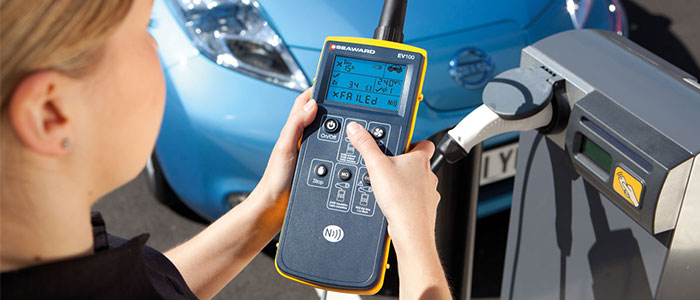
The common misconception of a lack of electric vehicle charging points in the UK is the prime argument for reasons against investing in an electric vehicle.
If truth be told, there are currently 1,500 public EV charging points across the UK. And with the government investing £30m into eight pilot regions, this number is expected to increase to 8,500 over the coming years.
But it doesn’t stop here. The Office of Low Emission Vehicles (OLEV) runs a UK-wide scheme, providing 75% funding up to £700 for a 32A charge point installation at home, with The Energy Saving Trust providing ‘top-up’ funding to foot the rest of the bill.
The concluding fact is simple: charging an electric car is a piece of cake and can be done pretty much anywhere.
Types of EV charging point
There are three main types of EV charging point, each defined by power output and hence how quickly they can charge an electric vehicle. While vehicle connector types can be conceived as a problem, most electric vehicles are supplied with multiple cables allowing connection with a wide range of EV charging points:
Slow charge (up to 3kW)

Slow charging an EV utilises a standard BS1363 13A socket outlet found in any UK household or business premises. These charging points charge use approximately 3kW of power and can fully charge an EV in around 6-8 hours.
- Almost every EV can be charged using a slow charger
- Low cost of installation
- Charging overnight utilises low electricity tariff
- Cuts company CO2 emissions
Fast charge (7-22kW)
 With a charge current of around 32A (7kW), using a fast charger reduces charging time to around 2-4 hours. These types of charger are commonly found at charging points found on public streets and those within service stations.
With a charge current of around 32A (7kW), using a fast charger reduces charging time to around 2-4 hours. These types of charger are commonly found at charging points found on public streets and those within service stations.
Although not all electric vehicles are capable of being charged at 32 amps, most models can be connected to them using the correct connector and will automatically draw either 13 or 32 amps depending on their charge capability.
- Widely available
- Quick charge time
Rapid charge (up to 50kW)

Rapid chargers supply AC or DC current from a dedicated charge point using a tethered, non-removable cable, similar to a traditional fuel pump. Rated at around 50kW, charging an EV to 80% capacity typically takes under 30 minutes.
Similar to fast charging, not all electric vehicles can use a rapid charger, but will draw a current dependent on their individual charge capability. Although extremely convenient being able to charge in such a short period of time, repeated rapid charging can have an adverse affect on battery life.
- Extremely quick charge time
Maintenance and testing of EV charging points
With an expected 8,500 public and countless more private EV charging points being installed throughout the UK in the near future, there is an increasing need to ensure the charging infrastructure is functioning safely and efficiently.
And this is where Seaward Electronics come in. Having developed an all-in-one testing and diagnostic solution, the Seaward EV100 EVSE Tester is designed to ensure that all types of AC electrical vehicle supply equipment (EVSE) are operating both safely and in accordance with IEC61851 (Electric vehicle conductive charging system - Part 1: General requirements); not only at the point of installation, but also throughout the life of the equipment as part of an ongoing periodic maintenance schedule.
Capable of conducting simple field tests, the EV100 can store diagnostic data supplied by the charge point and can be transferred wirelessly to an Android running EVSEMobile App. Diagnostic data can then be sent to any remote location for in-depth fault diagnosis or electronic storage for traceability purposes.
EV100 safety tests include the following:
- Output voltage of charge station
- Maximum available charging current
- Earth loop impedance
- RCD test
- Insulation resistance test
- Presence of correct mains supply and earth connection (single and three-phase)
EV100 diagnostic and fault finding tests:
- Simulates a number of fault conditions
- Disconnection time measurement
- Amplitude measurement
- Frequency measurement
- Duty cycle of the pulse width modulation (PWM) signal
